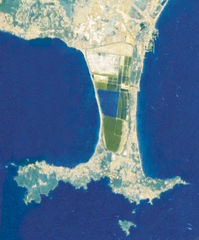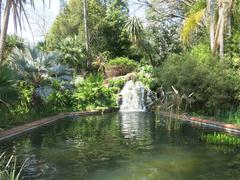Visiting Monument Aux Morts De La Guerre De 1914-1918 in Hyères, France: Tickets, Hours, and Visitor Tips
Date: 03/07/2025
Introduction
The Monument Aux Morts De La Guerre De 1914-1918 in Hyères is a moving tribute to the 438 local soldiers who perished during World War I. Situated in the heart of Hyères, this memorial is more than a site of remembrance; it is a living testament to the enduring impact of war on French society and reflects the broader movement of collective mourning that swept France after the Great War. With its unique allegorical design by sculptor Eric de Nussy, the monument represents both the pain of loss and the hope of deliverance. Open year-round and free to access, it is an essential stop for visitors interested in history, culture, and reflection (Var Matin; totalmilitaryinsight.com).
This guide offers a comprehensive look at the monument’s history, visitor information, architectural and symbolic features, and its place within the tapestry of French and local collective memory.
Table of Contents
- Historical Context and the Rise of French War Memorials
- The Monument in Hyères: History, Symbolism, and Design
- Visiting Information: Hours, Access, and Amenities
- Educational and Cultural Significance
- Commemorative Events and Community Engagement
- Nearby Attractions and Suggested Itineraries
- Frequently Asked Questions (FAQs)
- Conclusion and Practical Recommendations
- Sources and Further Reading
Historical Context and the Rise of French War Memorials
National Mourning and Memorialization
After World War I, France experienced collective trauma on an unprecedented scale, losing approximately 1.4 million soldiers. The resulting grief led to the construction of over 36,000 monuments aux morts across the nation, each serving as a communal focal point for mourning, remembrance, and identity. French law required each commune to inscribe the names of their fallen, transforming these memorials into tangible records of local sacrifice (AP News; cesarcultureg.com).
Evolution of Memorial Practices
Initially, most monuments focused on military sacrifice, but over time, many were expanded to honor victims of subsequent conflicts, including World War II and colonial wars. This evolution demonstrates the flexibility of these sites as living spaces of memory that adapt to changing historical narratives and community identities.
The Monument in Hyères: History, Symbolism, and Design
Planning and Construction
Hyères was among the first French towns to plan its war memorial before the end of World War I, but construction accelerated after the 1920 state subsidy law. Eric de Nussy’s design, chosen in 1921, features an allegorical female figure of deliverance, breaking from the tradition of depicting the “poilu” (French infantryman). The monument was completed and inaugurated in 1925, following some delays (Var Matin).
Symbolism and Artistic Features
The Hyères monument is notable for its allegorical representation: a female figure holding a sword and broken chains, symbolizing liberation and hope. Additional elements such as the Croix de Guerre, laurel wreaths, and anchor honor the different branches of the military. The names of the fallen are inscribed, and the monument has since been updated to include those lost in later conflicts, making it a record of ongoing sacrifice (Var Matin).
Location and Setting
Centrally located in Place Théodore-Lefebvre, the monument is surrounded by a “sacred enclosure” with paved paths and benches, creating a respectful space for reflection and remembrance. Its accessibility and visibility underscore the importance of memory within daily civic life (cesarcultureg.com).
Visiting Information: Hours, Access, and Amenities
Hours and Tickets
- Open: 24/7, year-round. No ticket required.
- Admission: Free.
Accessibility
- Wheelchair accessible with level, paved paths.
- Benches are nearby for those needing rest.
- The site is suitable for visitors with reduced mobility.
How to Get There
- By train: Hyères train station is a short distance away; taxis and buses connect to the town center.
- By bus: Local lines stop near Place Théodore-Lefebvre.
- By car: Public parking is available in the town center.
- On foot: Easily walkable from central Hyères.
Facilities
- No restrooms or ticket office at the monument; amenities are available in the town center.
- The area is generally safe, but exercise caution during nighttime.
Educational and Cultural Significance
The monument serves multiple educational purposes:
- Open-air classroom: Schools regularly organize visits, particularly for Armistice Day, reinforcing lessons on history, citizenship, and peace (totalmilitaryinsight.com).
- Living history: The site is updated with new names, reflecting ongoing remembrance and evolving narratives of inclusion.
- Cultural identity: The presence of family names and participation in commemorations foster community ties and personal connections to national history.
Commemorative Events and Community Engagement
- Armistice Day (November 11): Main annual ceremony featuring wreath-laying and readings.
- Victory in Europe Day (May 8): Additional commemorative event.
- Guided tours: Occasionally organized around these dates; check with the Hyères tourism office for schedules.
- Educational workshops: Offered in collaboration with schools and veterans’ groups.
Nearby Attractions and Suggested Itineraries
Enhance your visit by exploring:
- Hyères Old Town: Medieval streets, historic architecture, and cultural landmarks.
- Villa Noailles: Renowned modernist art center.
- Natural sites: Giens Peninsula, Porquerolles Island, and local beaches.
- Other memorials and ruins: Roman and medieval heritage sites.
For more on Hyères’ attractions, visit the official tourism website.
Frequently Asked Questions (FAQs)
Q: What are the visiting hours?
A: The monument is always open and free to visit.
Q: Is the site accessible for people with disabilities?
A: Yes, there are paved paths and level ground for wheelchair access.
Q: Are guided tours available?
A: Yes, especially during commemorative events. Contact the tourism office for details.
Q: Where can I find restrooms or refreshments?
A: In the town center, a short walk from the monument.
Q: Can I take photographs?
A: Photography is permitted, but please be discreet, especially during ceremonies.
Conclusion and Practical Recommendations
The Monument Aux Morts De La Guerre De 1914-1918 in Hyères is both a solemn place of reflection and a vibrant part of the community’s living memory. Its accessible location, thoughtful artistic design, and ongoing role in civic life make it a must-visit for history buffs, educators, and cultural travelers alike.
Visitor Tips:
- Attend Armistice Day or VE Day ceremonies for a moving experience.
- Combine your visit with other Hyères attractions for a full day of exploration.
- Download the Audiala app for guided tours and interpretive content.
- Respect the “sacred enclosure” and maintain a quiet demeanor.
- For current events, educational resources, or to arrange tours, check Hyères Tourism or local archives.
Whether you come to pay respects, learn, or simply reflect, the Hyères war memorial offers a profound connection to France’s past and its ongoing quest for peace.
Sources and Further Reading
- Le Monument Aux Morts De Hyères, 2024, Var Matin
- History of French War Memorials, 2025, César Culture G
- French War Memorials and Cultural Representation, 2025, Total Military Insight
- French World War I Monuments and UNESCO Efforts, 2025, AP News
- French Archives and Commemorative Practices, 2025, France Archives
- Hyères Official Tourism Website, 2025
Image suggestions: Include high-quality photos of the monument with alt tags such as “Monument Aux Morts De La Guerre De 1914-1918 Hyères statue,” “Hyères war memorial close-up,” and “Place Théodore-Lefebvre Hyères monument view.” Consider embedding virtual tour links or interactive maps if available.








